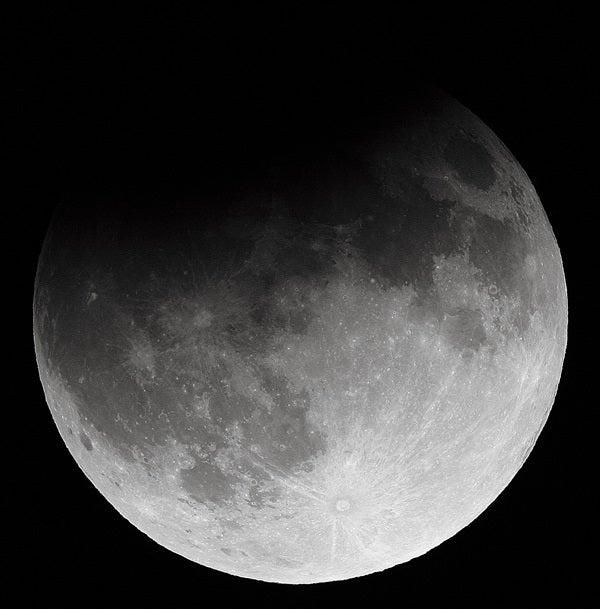A lunar eclipse occurs when the Sun, Earth, and Full Moon align in that order. Viewers can expect to see a bite taken out of the Full Moon’s southern limb, while the rest of the disk takes on a more grayish hue than normal.
Residents of Europe, Asia, Africa, and Australia will get the best views. In North America, those in the far northeast will see the end of the eclipse, and those in the far northwest will see the eclipse begin.
The eclipse will begin at 17h17m Universal Time (12:17 p.m. EST). It will take 4 hours and 11 minutes for the Moon to pass through Earth’s shadow completely. Maximum will occur at 19h23m UT (2:23 p.m. EST, 10:23 a.m. AKST).
The next partial lunar eclipse will occur June 26, 2010, and the next total lunar eclipse will be December 21, 2010.
Eclipse begins: 12:17 p.m. EST, 8:17 a.m. AKST
Umbral eclipse begins: 1:52 p.m. EST, 9:52 a.m. AKST
Mideclipse: 2:23 p.m. EST, 10:23 a.m. AKST
Umbral eclipse ends: 2:52 p.m. EST, 10:52 a.m. AKST
Eclipse ends: 4:28 p.m. EST, 12:28 p.m. AKST
- Locate the Moon in your night sky with Astronomy.com’s interactive star chart: StarDome
- View and post eclipse images in our Online Reader Gallery
- Sign up to receive Astronomy‘s FREE weekly e-mail newsletter!











